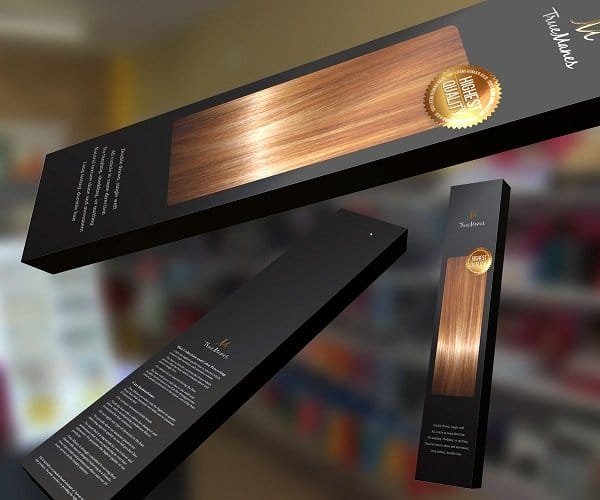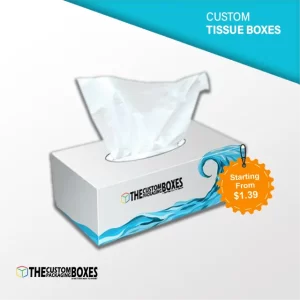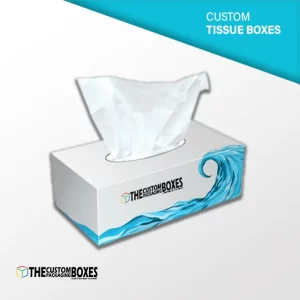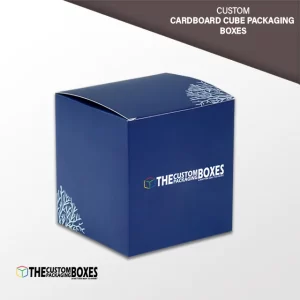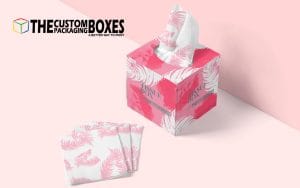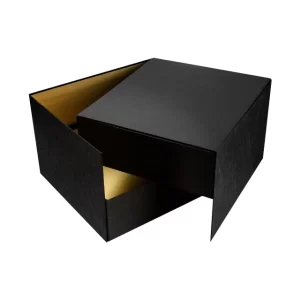6 Printed Hair Extension Packaging Problems That Your Lower Sales
Unveiling the Pitfalls: 6 Printed Hair Extension Packaging Problems That Could Lower Your Sales
Introduction:
In the dynamic world of beauty and fashion, hair extensions have become an essential accessory for individuals looking to enhance their natural hair or experiment with different styles. With the increasing demand for hair extensions, brands are constantly striving to capture consumers’ attention and stand out in the competitive market. Printed hair extension packaging serves as a crucial tool for brand recognition, product differentiation, and customer engagement. However, certain packaging problems can hinder sales and negatively impact brand reputation. In this in-depth article, we’ll uncover six common printed hair extension packaging problems that could lower your sales and provide practical solutions to overcome them.
- Poor Print Quality: The first and most obvious problem with printed hair extension packaging is poor print quality. This includes issues such as blurry images, smudged text, uneven color distribution, and faded logos. Poor print quality not only detracts from the visual appeal of the packaging but also reflects poorly on the brand’s professionalism and attention to detail. Customers may perceive products packaged in poorly printed boxes as low-quality or inferior, leading to decreased sales and negative brand associations.
Solution: To address poor print quality, work with a reputable printing company that specializes in high-quality printing techniques such as offset printing, digital printing, or screen printing. Ensure that the printing equipment is properly calibrated, and use premium-quality inks and substrates to achieve vibrant colors and crisp details. Regularly inspect printed samples for consistency and accuracy to maintain a high standard of print quality across all packaging batches.
- Inconsistent Branding: Consistency is key when it comes to branding, and inconsistent branding on hair extension packaging can confuse consumers and dilute brand identity. This includes variations in logo placement, color schemes, typography, and brand messaging across different packaging designs or product lines. Inconsistent branding makes it difficult for customers to recognize and connect with the brand, resulting in reduced brand loyalty and lower sales.
Solution: Develop brand guidelines that clearly outline the preferred logo usage, color palette, font styles, and design elements for hair extension packaging. Ensure that these guidelines are followed consistently across all packaging designs and product variations. Implement quality control measures to review and approve packaging proofs before production to ensure adherence to brand standards. Regularly review and update brand guidelines as needed to accommodate changes in brand strategy or product offerings.
- Complicated Packaging Design: While creative packaging designs can capture consumers’ attention, overly complicated designs can detract from the overall user experience and hinder sales. This includes packaging with excessive embellishments, intricate die-cut shapes, or complicated opening mechanisms that make it difficult for customers to access the product. Complicated packaging designs may frustrate customers and discourage repeat purchases, leading to lost sales opportunities.
Solution: Simplify hair extension packaging designs to make them more user-friendly and intuitive for customers. Focus on clean, minimalist designs that prioritize functionality and ease of use without sacrificing visual appeal. Incorporate user-friendly features such as easy-open flaps, tear strips, or resealable closures to enhance the packaging experience. Conduct usability testing with focus groups or customer feedback surveys to identify and address any usability issues before production.
- Lack of Product Information: Effective communication of product information is essential for informing customers about the features, benefits, and usage instructions of hair extensions. However, some printed packaging may lack essential product information, such as hair extension type, length, texture, care instructions, and styling tips. Without adequate product information, customers may feel uncertain about their purchase decision and hesitate to buy the product.
Solution: Include clear and comprehensive product information on hair extension packaging to educate customers and empower them to make informed purchasing decisions. Incorporate essential details such as hair extension type (e.g., clip-in, tape-in, sew-in), hair length, hair texture (e.g., straight, wavy, curly), material composition (e.g., human hair, synthetic hair), care instructions (e.g., washing, styling, storage), and recommended usage tips. Use concise language and easy-to-read fonts to ensure that the information is accessible and understandable to all customers.
- Fragile Packaging Materials: Hair extensions are delicate products that require adequate protection during shipping, handling, and storage. However, some printed hair extension packaging may be made from fragile or flimsy materials that fail to provide sufficient protection against damage or breakage. Fragile packaging materials not only compromise the integrity of the product but also increase the risk of customer dissatisfaction and returns.
Solution: Select durable and resilient packaging materials for hair extensions that can withstand the rigors of transportation and handling. Choose sturdy cardboard or corrugated board for boxes and packaging inserts, and consider adding additional cushioning or padding to protect the contents. Conduct drop tests and compression tests to evaluate the durability and protective qualities of the packaging materials before production. Invest in high-quality packaging materials that strike the right balance between protection and aesthetics to ensure that hair extensions arrive in pristine condition to customers.
- Limited Shelf Appeal: Effective packaging should not only protect the product but also attract customers’ attention and encourage purchase decisions. However, some printed hair extension packaging may lack shelf appeal, failing to stand out in crowded retail environments or online marketplaces. Packaging with uninspired designs, generic imagery, or dull color schemes may blend into the background and fail to capture consumers’ interest, resulting in missed sales opportunities.
Solution: Enhance the shelf appeal of hair extension packaging with visually striking designs, captivating imagery, and vibrant color schemes that command attention and evoke emotion. Use high-resolution product photography, lifestyle images, or illustrations to showcase the beauty and versatility of the hair extensions. Incorporate eye-catching design elements such as foil stamping, embossing, or spot UV coating to add dimension and visual interest to the packaging. Conduct market research and competitor analysis to identify trends and consumer preferences in packaging design, and use this insight to create packaging that resonates with your target audience.
Conclusion:
In conclusion, printed hair extension packaging plays a crucial role in shaping consumers’ perceptions and purchase decisions. However, several common packaging problems can hinder sales and negatively impact brand reputation if left unaddressed. By addressing issues such as poor print quality, inconsistent branding, complicated packaging design, lack of product information, fragile packaging materials, and limited shelf appeal, brands can create packaging that enhances the overall customer experience, drives sales, and builds brand loyalty. By prioritizing quality, functionality, and aesthetics in hair extension packaging, brands can differentiate themselves in the competitive market and leave a lasting impression on customers.
Printed Hair Extension Packaging
Hair extensions are considered to be the most effective accessories that can give a dramatic change to your personality. This accessory is gaining a lot of popularity in the fashion world these days. If you are suffering from hair loss and other hair problems, then you can use these extensions for brilliantly concealing them. Hair extensions are accessible in the market in many different varieties. You can easily purchase them from the local retailers. Well, in this article, we will discuss the 6 hair extension packaging problems that can lower your sales.
You have a great hair extension packaging, but it’s not flying off the shelf. Is one of these packaging problems turning down your sales?
You Don’t Understand Your Market Completely
There are so many new markets and retail outlets and don’t forget Internet too. The question is can one package service them all? The answer to this question is complete no. Some types work to your benefit in every category of packaging, but in general, attributes that appeal to one audience won’t appeal to another.
The Hair Boxes Are Too Big Or Small
This is a very interesting fact. Products that work well for children, especially kid proof packaging, simply doesn’t complete the requirements of the over 50 market.
The Hair Packaging Is Too Tough To Open:
Christmas and holiday gifts cannot be opened easily or require the aid of scissors. Many product packaging has come about for specific reasons: security, tamper evident, counterfeiting and so on. But when the next time you try to open a product was all that packaging necessary?
The Package Is Too Common:
Are you trying to attract to all people and as a result, it doesn’t appeal to anyone. Are you one of them who get confused when looking at a product packaging?
The Boxes For Hair Extensions Aren’t Up-To-Date.
There are a lot of brands that are repackaging their image. Old brands have been refreshed with new and updated packaging. Old brands can bore the consumer simply because of their old packaging.
The Package Is Too Gimmicky.
Remember, simple is better. Too complicated products only appeal to a certain market segment, and it does not attract the larger share of the purchasing market. The electronics industry seems to have lost track of this fact. Make sure it doesn’t apply to your hair extension boxes.


